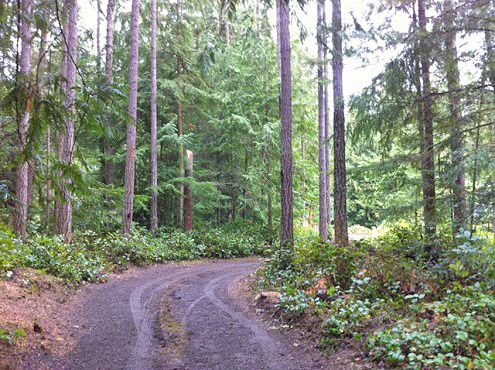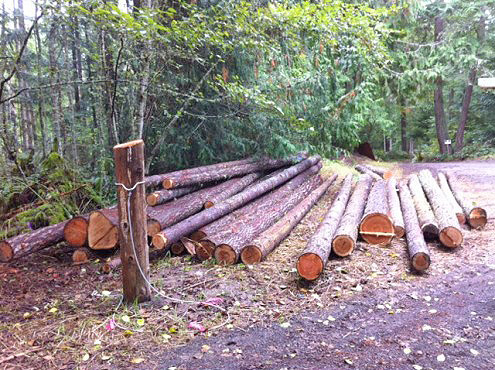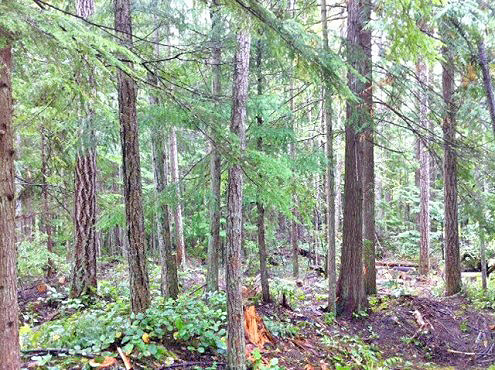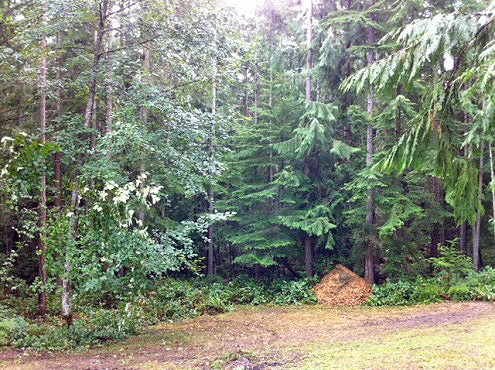Olympic Foothills
Tree Cable Installation
This stand was thinned for three objectives listed here by priority: Hazard, light exposure and stand health. The client needed multiple hazard trees removed that were near her home and outbuildings – these were the first priority. She has a beautiful garden that she meticulously tends 6 months out of the year. The garden was losing out in the battle for light as the stand closed in around it. A few trees were taken to give more light to the garden, three of the trees directly adjacent to the garden were made into natural snags. The rest of the stand bordering the yard was carefully gone through and assessed for forest stand health. Trees were selected to be cut based on their proximity to other trees within the stand. The objective was to create more light for the younger trees, establish a variance in cohort age, and create natural snags. This stand was thinned for three objectives listed here by priority: Hazard, light exposure and stand health.
The client needed multiple hazard trees removed that were near her home and outbuildings – these were the first priority. She has a beautiful garden that she meticulously tends 6 months out of the year. The garden was losing out in the battle for light as the stand closed in around it. A few trees were taken to give more light to the garden, three of the trees directly adjacent to the garden were made into natural snags. The rest of the stand bordering the yard was carefully gone through and assessed for forest stand health. Trees were selected to be cut based on their proximity to other trees within the stand. The objective was to create more light for the younger trees, establish a variance in cohort age, and create natural snags.
The average basal diameter of the trees in this stand is about 14. The average age of the trees in the stand is about 100. The reason the stems are so small can be attributed to the density that they were planted. After our thinning treatment, selective felling taking the worst trees first and extracting them with draft horses, the stand has light into the forest floor. Taking the “worst first” means cutting the trees that have disease, wounds or other physical damage and leaving the good genetics of the stand to prosper – this results in more light for the healthy trees in the stand.
Click on any photo to make it larger





